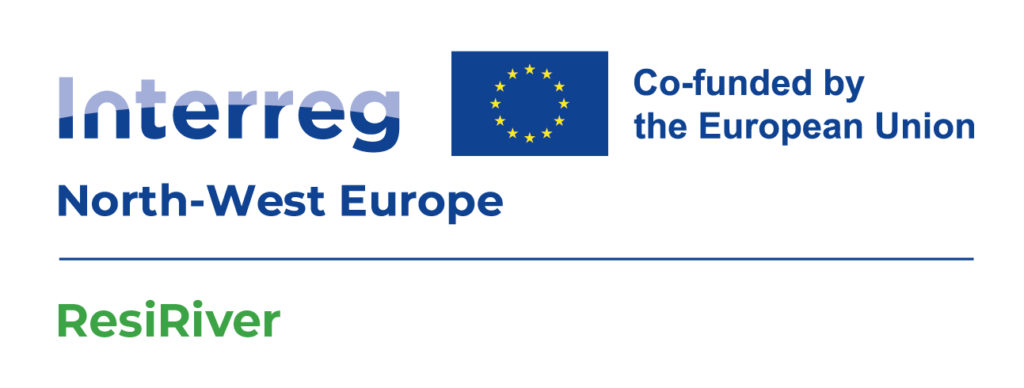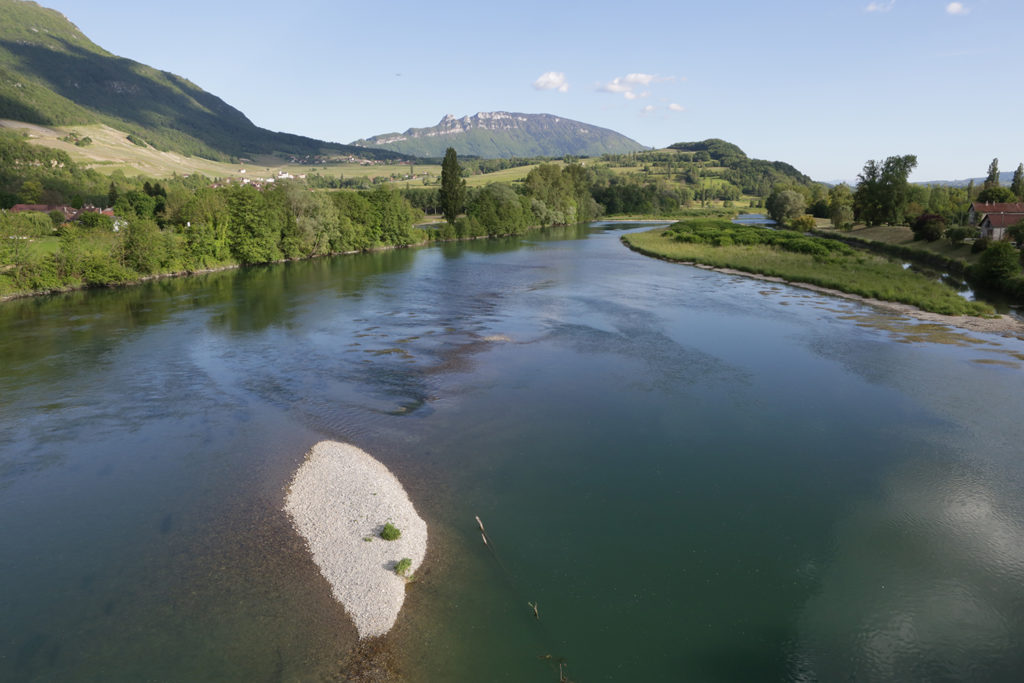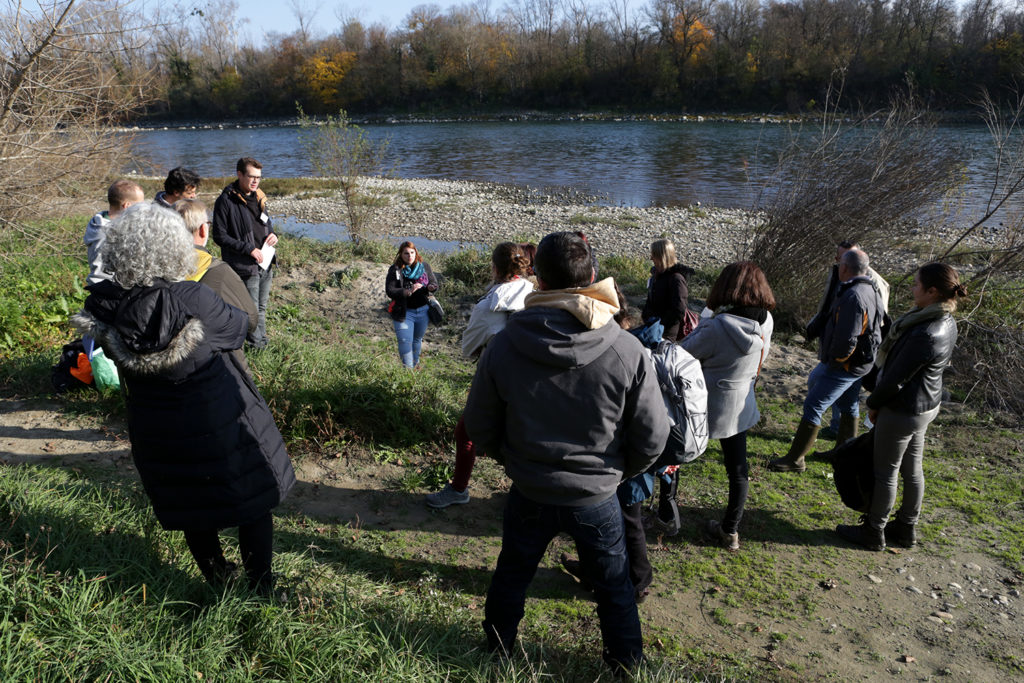Interreg North-West Europe Project: ResiRiver



ResiRiver – Creating Resilient River Systems by Mainstreaming and Upscalling Nature Based Solutions (2023-2028)
The Graie and OHM Vallée du Rhône are taking part for the next 5 years in the Interreg North-West Europe project « ResiRiver – Creating Resilient River Systems by Mainstreaming and Upscalling Nature Based Solutions » (2023-2028).
The project is co-financed by the Interreg North-West Europe 2021-2027 cross-border cooperation programme for a period of 5 years (March 2023 – March 2028). Graie is also supported by the RMC Water Agency.
11 European partners
The project, coordinated by the Dutch Ministry of Infrastructure and Water Management, Rijkswaterstaat, involves 11 partners from 5 European countries: the City of Dordrecht (NL), the CPIE Vallées de l’Authie et de la Canche (FR), the Federal Waterways and Shipping administration (DE), the University of Liège (B), Voies Navigables de France (FR), Syndicat Mixte pour le SAGE de la LYS – SYMSAGEL (FR), Local Authority Waters Programme (Tipperary County Council) – LAWPRO (IE), Dundalk Institute of Technology (IE), GRAIE (FR), University of Applied Sciences – HAN (NL).
A project to develop nature-based solutions (NBS)
ResiRiver aims to lead to the widespread and increased use of nature-based solutions in river environments in order to strengthen their capacity to adapt and resilience in the face of climate change.
These solutions contribute to Europe’s ambition to create a Blue Economy and generate climate resilience while contributing to human well-being and biodiversity. However, in North-Western Europe, the widespread implementation and large-scale application of NBS in river systems is not yet standard practice. Decision-makers are not always aware of these solutions as a viable option. External support (stakeholders) is sometimes insufficient when the organisations behind projects wish to implement this type of solution.
The ResiRiver project addresses these issues by:
- building a solid base of solutions that contribute to their generalisation by collecting knowledge and experience from large-scale NBS pilots in the catchment areas of the Rhine, Meuse, Weser, Lys, Dromore and Wantij rivers and from previous experiments on the Rhone and Vesdre rivers;
- the transfer of knowledge and experience via tailor-made training kits and site visits for project partners and external contributors;
- synthesising knowledge and experience into easy-to-implement action plans, guidelines and strategies.

The role of Graie and OHM Vallée du Rhône
The Graie, in partnership with research teams from the OHM Vallée du Rhône, is helping to achieve these objectives by contributing the experience it has acquired on the Rhône to the European collective.
Since 2000, an ambitious restoration programme has been implementing NBS in order to restore more natural hydrological, morphological and ecological processes and thus improve the river’s adaptability to environmental change. These NBS contribute to the sustainable development of the Rhône region (Rhône Plan). The restoration programme has resulted in the rehabilitation of more than 40 lônes and an increase in reserved flows in 7 short-circuited sections of the Rhône (~110km / 520 km). Work is currently underway to recharge sediment, dismantle Girardon installations (reservoirs, groins, etc.) and embankments setback.
The number of ecological restoration projects on the river is increasing, and they are becoming more ambitious in terms of objectives and territorial coverage. As a result, they involve a wider range of stakeholders (elected representatives, local residents, users, associations, industrialists) and the development of methods for mobilising and organising groups. The experience of those involved in restoration projects on the Rhône (e.g. CNR, SHR, SMIRIL, CEN 38, SYMADREM, SYMALIM) is rich and varied (e.g. communication, consultation, co-construction, etc.). They constitute a capital of knowledge and know-how that is still little pooled and developed, whether on a regional, national or European scale. The challenge is to share and build on these skills in order to support and develop the use of NBS.

In order to tackle this issue, the Graie and the OHM Vallée du Rhône, in conjunction with all those involved in the river, have set themselves three areas of work as part of the ResiRiver project:
Area 1. Formalise, capitalise on and make the most of experience in mobilising stakeholders around restoration actions developed on the Rhône over more than 20 years
The aim is to identify and analyse the steps taken to mobilise stakeholders in restoration projects already carried out on the Rhône; to monitor several steps taken to mobilise stakeholders in ongoing restoration projects; to compare the steps taken on the Rhône with those taken in other restoration projects on major European rivers.
Area 2. Set up a scientific and technical network capable of collectively analysing these experiences and strengthening its skills in order to mobilise the players in the Rhône region around restoration projects: a series of 5 workshops involving the river’s players will be organised on a Rhône-wide scale.
Area 3. Formulate regional, national and European recommendations and improve best practice in mobilising stakeholders to implement NBS and restore major rivers. The first objective is to make an inventory of the scientific and technical documents devoted to the mobilisation of stakeholders for the ecological restoration of watercourses and to identify the existing recommendations and good practices in this area. On the basis of this review, and drawing on the results of the Axis 2 workshops, the next step will be to propose additions or improvements to stakeholder mobilisation practices, particularly for those responsible for restoration and NBS projects at local and national level (public bodies, public regulatory bodies, private consultancies). Recommendations will also be made to political players.
Further information






